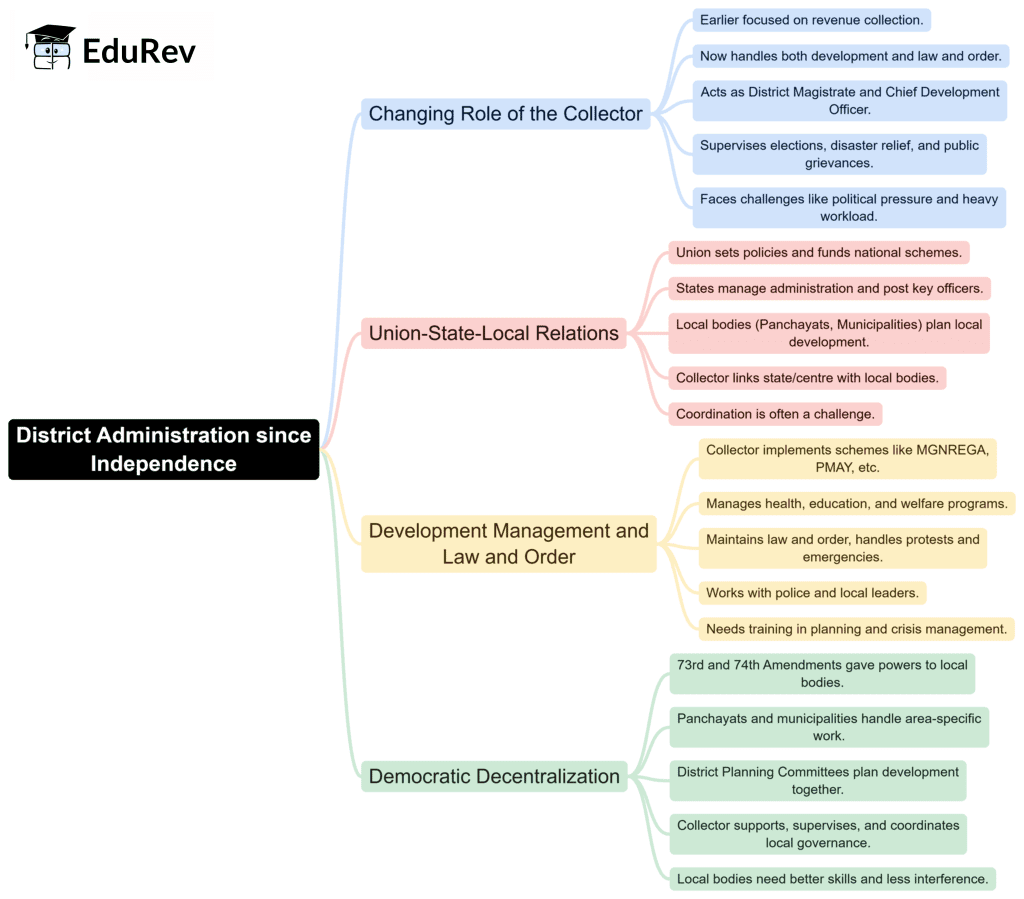UPSC Exam > UPSC Notes > Public Administration Optional for UPSC (Notes) > Mind Map: District Administration since Independence
Mind Map: District Administration since Independence | Public Administration Optional for UPSC (Notes) PDF Download

The document Mind Map: District Administration since Independence | Public Administration Optional for UPSC (Notes) is a part of the UPSC Course Public Administration Optional for UPSC (Notes).
All you need of UPSC at this link: UPSC
|
58 videos|242 docs
|
FAQs on Mind Map: District Administration since Independence - Public Administration Optional for UPSC (Notes)
| 1. What is the role of district administration in India since independence? |  |
Ans. The district administration in India plays a crucial role in governance and development. Since independence, it has been responsible for implementing government policies, maintaining law and order, and facilitating local development. The district collector is the chief administrative officer, overseeing various departments and ensuring coordination among them to address the needs of the local population.
| 2. How has the structure of district administration evolved after independence? |  |
Ans. After independence, the structure of district administration in India underwent significant changes to adapt to the evolving needs of governance. Initially, the focus was on revenue collection and law enforcement. Over time, the role expanded to include social welfare, health, education, and infrastructure development, reflecting a more integrated approach to rural and urban administration.
| 3. What are the challenges faced by district administration in contemporary India? |  |
Ans. District administration in contemporary India faces several challenges, including bureaucratic inefficiencies, inadequate resources, and the need for better coordination among various government departments. Additionally, issues like corruption, political interference, and the impact of rapid urbanization complicate the administration's ability to deliver services effectively and equitably.
| 4. How does district administration contribute to grassroots democracy? |  |
Ans. District administration contributes to grassroots democracy by empowering local self-governments, such as panchayati raj institutions, which enable communities to participate in decision-making processes. This decentralization allows for better representation of local needs and priorities, fostering accountability and transparency in governance at the district level.
| 5. What reforms have been implemented in district administration since independence? |  |
Ans. Since independence, several reforms have been implemented in district administration, including the introduction of the 73rd and 74th Constitutional Amendments, which strengthened local self-governance. Additionally, reforms aimed at enhancing transparency, digitization of records, and citizen engagement initiatives have been introduced to improve service delivery and responsiveness to the public's needs.
Related Searches
















